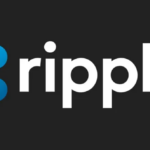HashKey Capital introduces the first XRP fund in Asia, supported by investment from Ripple

XRP, a digital asset, offers fast settlement times, low transaction fees, and seamless compatibility between financial institutions, presenting a stark contrast to conventional payment systems. This cryptocurrency’s ability to facilitate swift cross-border transactions has attracted increasing attention and adoption across various industries. However, despite its innovative features and potential benefits, XRP’s regulatory status remains a point of contention and uncertainty within the financial sector.
One of the key advantages of XRP is its efficiency in settling payments quickly compared to traditional banking systems. With transactions completing in just a few seconds, XRP enables near-instantaneous remittances and fund transfers, eliminating the delays typically associated with traditional banking channels. This speed is particularly valuable in cross-border transactions, where time sensitivity and operational costs are critical factors for businesses and individuals seeking to transfer funds across different countries.
In addition to its rapid settlement times, XRP boasts significantly lower transaction costs compared to traditional payment systems. The minimal fees associated with XRP transactions make it an attractive option for businesses looking to reduce operational expenses and increase efficiency in their financial transactions. By leveraging XRP’s cost-effective infrastructure, companies can streamline their payment processes and enhance their overall financial operations.
Moreover, XRP’s interoperability across various financial institutions and networks sets it apart from conventional payment systems. This interoperability enables seamless connectivity between different entities, offering a standardized platform for executing transactions across disparate systems. By supporting interoperability, XRP facilitates increased collaboration and efficiency within the financial industry, leading to improved liquidity and accessibility for businesses and consumers alike.
Despite the numerous benefits of XRP, uncertainties surrounding its regulatory status have posed challenges for widespread adoption and integration into mainstream financial services. The classification of XRP as a digital asset rather than a traditional security has sparked debates and legal concerns among regulators and industry stakeholders. This regulatory ambiguity has led to hesitancy among financial institutions and government bodies in fully embracing XRP as a viable payment solution.
In conclusion, XRP’s rapid settlement times, cost-effective transactions, and interoperability make it a compelling option for businesses and individuals seeking efficient payment solutions. However, regulatory uncertainties surrounding its classification as a digital asset have created obstacles to its widespread adoption within the financial sector. As the debate over XRP’s regulatory status continues, industry participants must navigate these challenges and leverage the unique benefits of this innovative cryptocurrency to drive further advancements in the digital payments landscape.






